Battlerite is bite-sized MOBA mayhem
Now out of Early Access, here's how Battlerite focuses on the fun chaos of the MOBA teamfight.
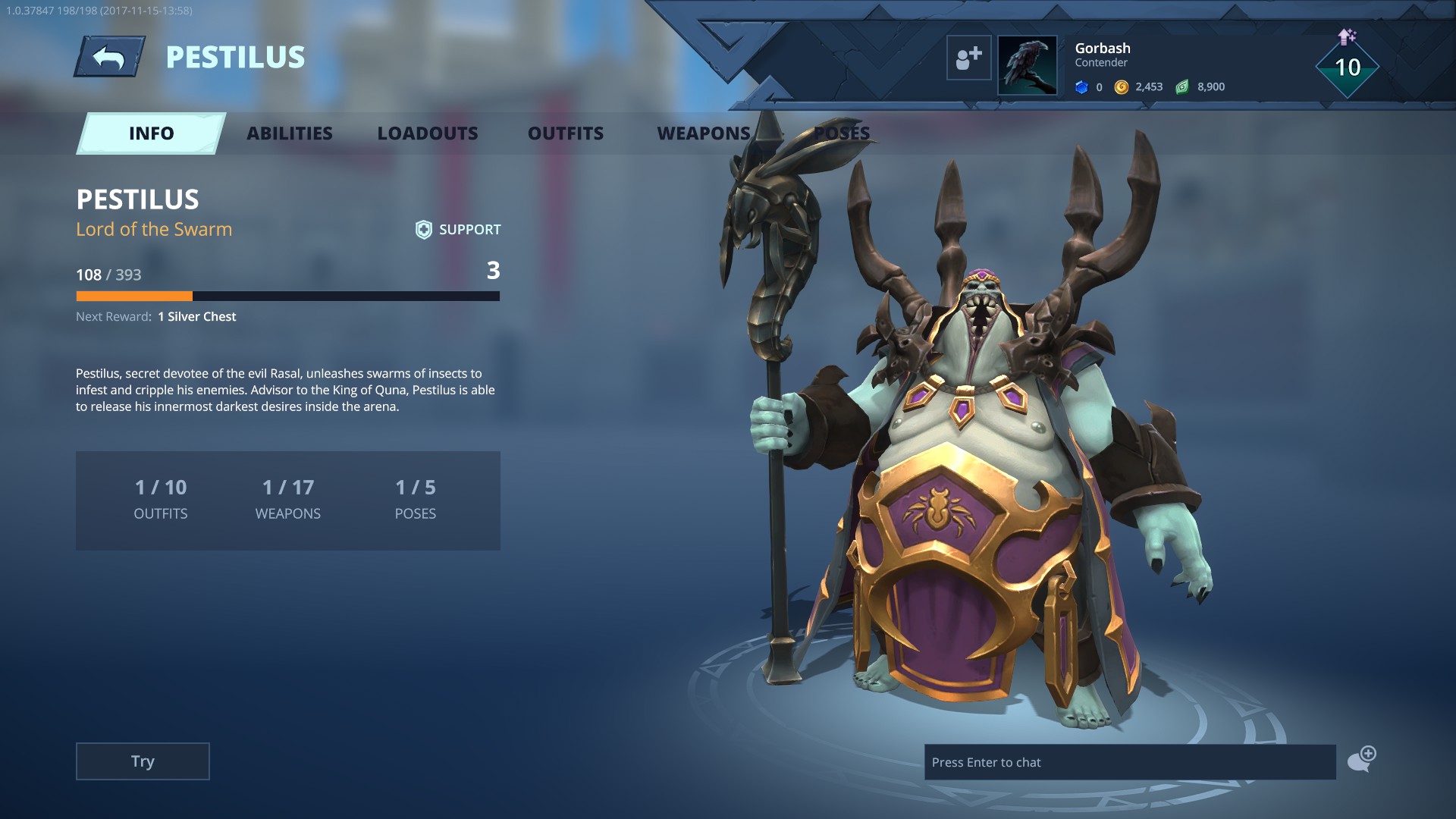
Pestilus is a monstrous support hero who looks like he wandered out of a Dungeons & Dragons Monster Manual. His basic attack attaches moths to both enemies and allies, letting him heal and harm over time. He can throw a giant queen moth to heal allies in an area as well as hurl a ball of spiders to panic enemies. Instead of a leap or dodge he infests other heroes, literally jumping into their bodies to bestow buffs or debuffs, but more importantly making me untargetable for the duration. It's a useful ability to have in a big teamfight.
Battlerite knows all about big teamfights. Regardless of any given MOBA’s peculiarities, they all come down to a series of dust-ups. These carefully coordinated battles are often the determining factor in a match, and they're a significant part of what makes MOBAs compelling as a spectator sport.
The appropriately named Stunlock Studios have taken those big moments of a typical 30-60 minute match and transformed them into a 10-minute single-elimination arena brawl of pure adrenaline-pumping chaos. It’s tense, challenging, enjoyable, and free-to-play.
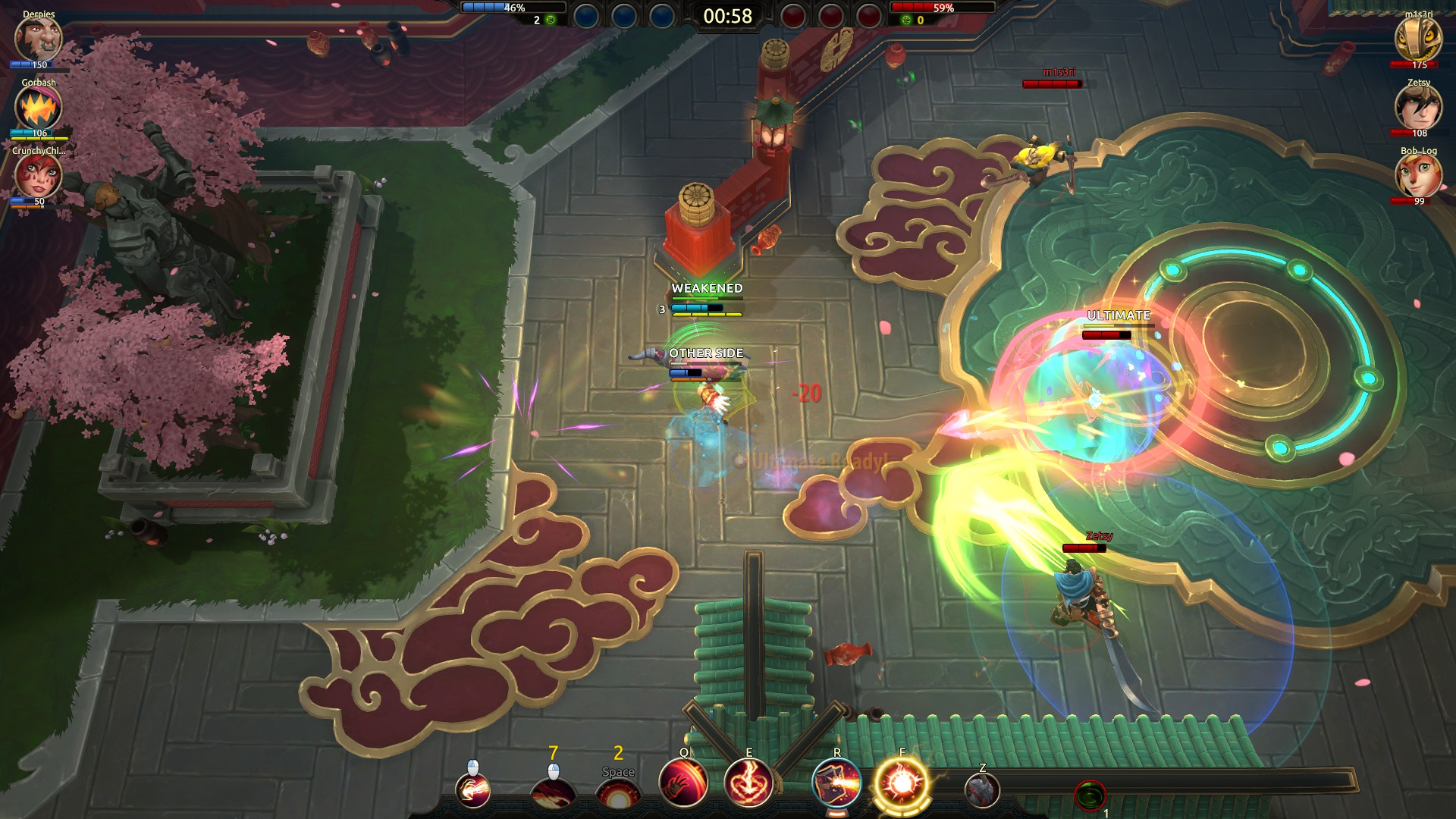
As of its launch out of Early Access Battlerite offers 22 heroes, putting it at the low-end of the MOBA scale in terms of character count. Heroes come in only three different class styles: melee, ranged, and support. As is custom for free-to-play MOBAs, a rotation of heroes are available to play in 2v2 or 3v3 PvP modes. There’s also the option of battling cooperatively against the AI, though the AI is horrendously bad compared to the average (or even below average) human opponent.
After the 5-10 seconds it takes to queue up a match, I’m dropped into a small starting area with some training dummies, where my allies and I test fire our colorful attacks, leaping jumps, and defensive shields. With only two or three players per side instead of the usual five-on-five action I was expecting an easy, casual experience. But instead I was battered against walls, thrown up into the air, deftly counterattacked, and embarrassingly obliterated.
Each hero has a staggering six abilities to master, including an Ultimate ability. Abilities and attacks vary wildly between heroes, but most possess some kind of dodging, leaping, or stealthing as well as shielding, countering, and long-ranged attacks. This makes the heroes in Battlerite much more well-rounded and complex than in the average MOBA. Shorter rounds and ease of matchmaking make it more palatable but some of the genre’s intimidating barrier to entry is still here.
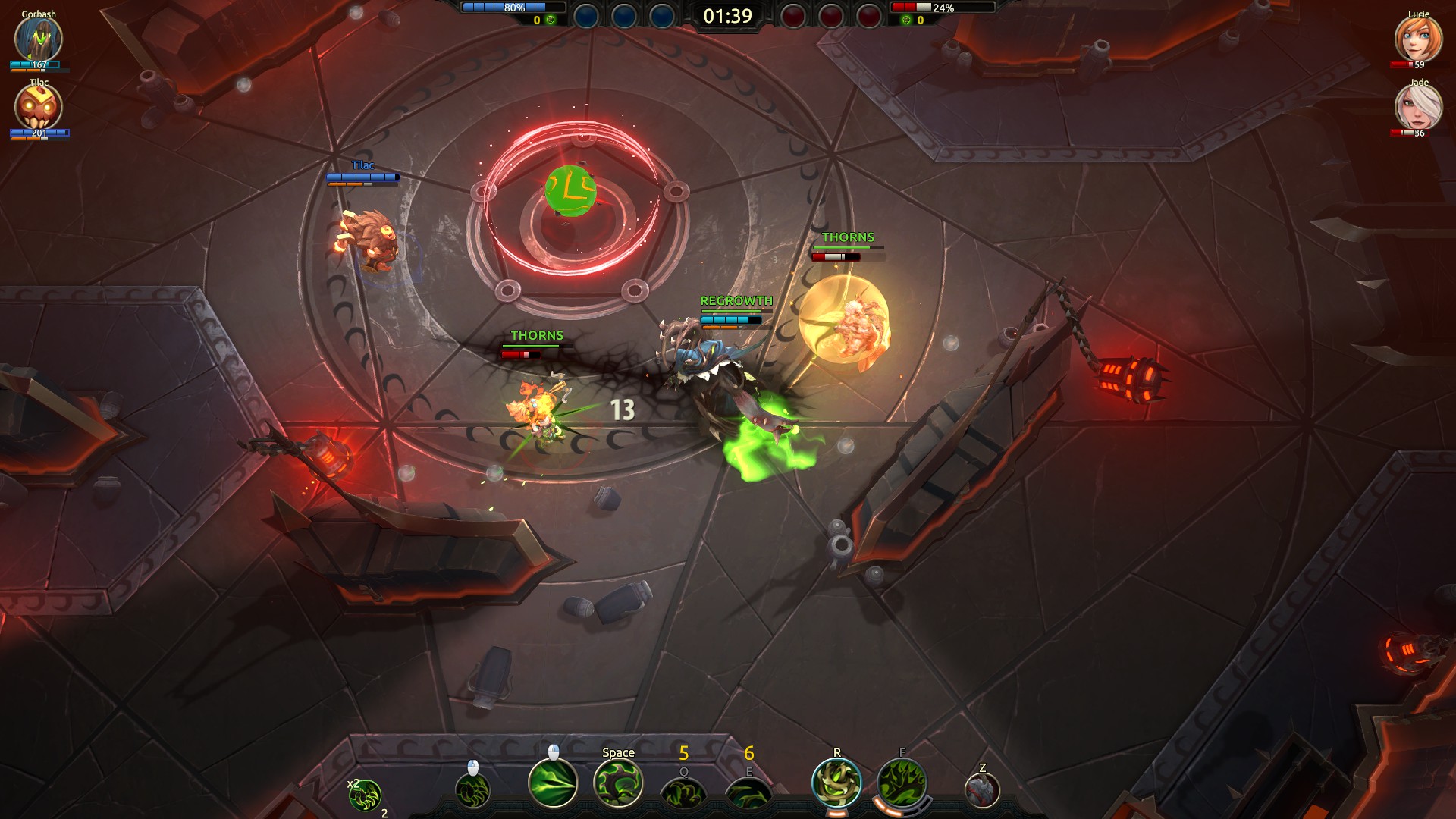
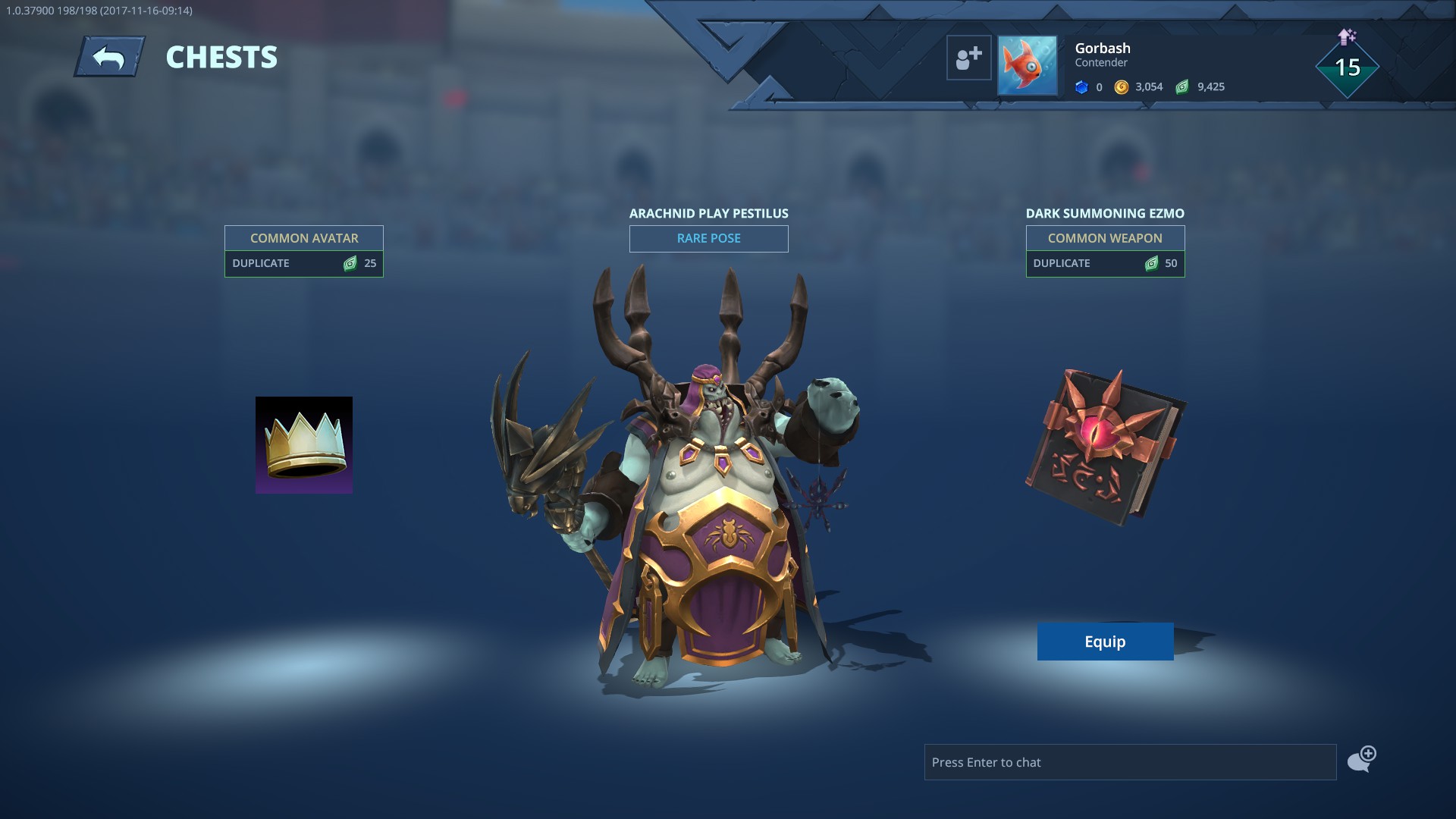
Battlerite’s loot boxes are lifted almost exactly from Overwatch in their content and visuals, right down to how loot comes flying out of the chest. Heroes, skins, poses, and weapon styles can all be found inside silver and gold chests. Heroes and chests can be purchased with gold earned from playing games and completing daily quests, while tokens found in chests are used to purchase cosmetic items. Alternatively you can pay $US30 to unlock all the heroes.
The fighting never stops, and it’s always single elimination. Most matches last only a few minutes, with a PUBG-like shrinking force field descending on everyone if things run too long. After a few matches I realized that my healing over time as Pestilus offered my team a better level of sustainability, and that by playing more defensively we could usually turn the tables.
The biggest gaming news, reviews and hardware deals
Keep up to date with the most important stories and the best deals, as picked by the PC Gamer team.
Teamwork will always play a major role but Battlerite’s low player numbers make it feel less necessary than normal. Pure skill shines bright in the arena. The heroics of a single remaining hero will be the stuff of legends, as I discovered while playing as the pint-size warlock Ezmo, teleporting away from a fatal attack before turning around and blasting both my opponents to death, securing the win and a round of cheers from my eliminated friends.
There are a variety of themed maps, but the differences between them are slight—they’re more like Hearthstone window dressing. Each small arena contains walls that block line of sight, even for allies, as well as some health and energy pickups. Energy fuels a few of your more advanced abilities in a way that feels closer to fighting games like Mortal Kombat and Injustice than a standard mana-based system.

Every hero has four blocks of energy that fills up as they attack. Two abilities can be shifted (literally by holding down the Shift key) into a more powerful or different attack by burning off energy, or I could save up all four energy blocks to unleash my Ultimate. It’s a series of interesting split-second decisions that add to the chaos of battle.
Additionally each hero has a series of 'battlerites', which are ways of modifying or adding bonuses to different abilities (think Talents from Heroes of the Storm). Before a match begins I select a loadout of five battlerites. When playing the spear-wielding melee hero Shifu on a team that didn’t have a support hero I loaded up on healing battlerites, and I turned Ezmo into a highly mobile auto-attacker by using a battlerite that reloaded his basic attack whenever he teleported.
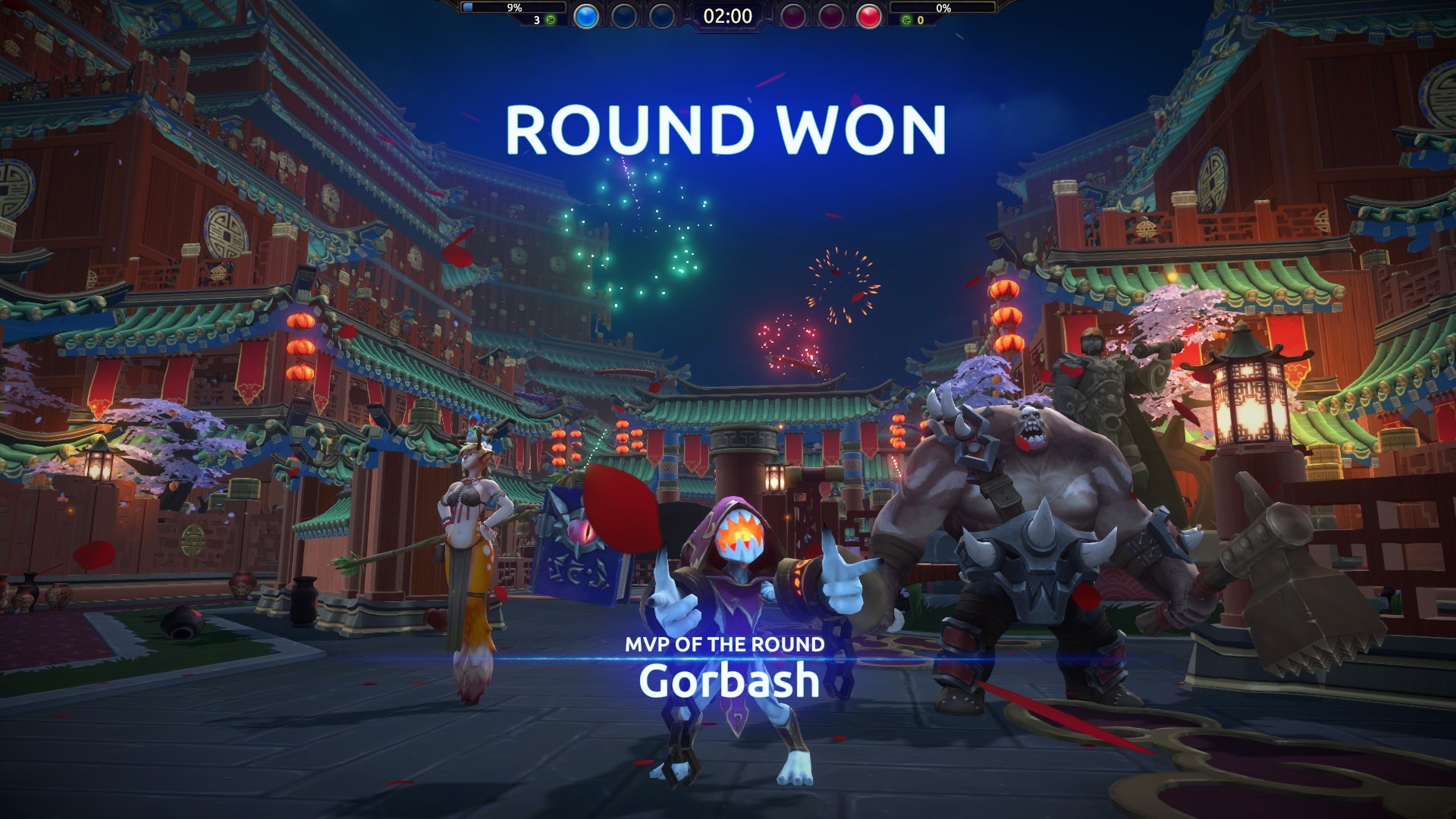
The brawl mode is enough to make Battlerite worthwhile for anyone who enjoys a good teamfight, but things are taken a step further with the new Battlegrounds mode, which is currently in beta. Battlegrounds harkens back to traditional MOBA design with larger maps that have multiple objectives both teams have to compete for, like Heroes of the Storm.
These objectives are played in rounds and vary from king-of-the-hill to escort-the-payload and kill-the-mobs. It’s not exactly revolutionary but it is interesting to play a lengthier mode (15-20 minutes) that allows you to respawn and conduct multiple battles. With no lanes or towers and only three heroes per side it still feels very light compared to a full-fledged MOBA, however.
Battlerite could be a valuable introduction to the genre for those put off by lengthier, more obtuse MOBAs and the sheer number of abilities mean there is complexity there for those who want something to study. It’s definitely easier to jump into a five-minute match and learn from my mistakes than suffer through 40 minutes of getting my ass kicked.

